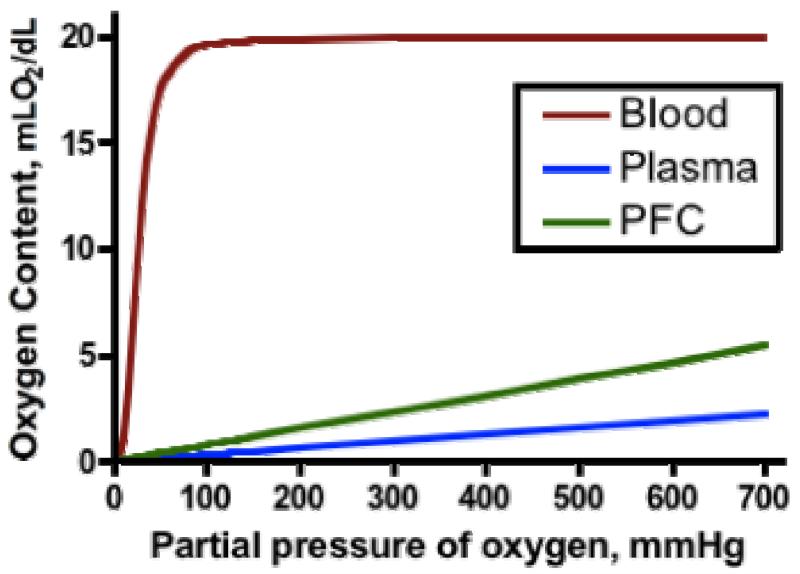Figure 3.
Universal O2 carrying solutions may replace the O2 carrying capacity and O2 transport functions of allogeneic blood. These O2 carriers will also prevent the many complications associated with blood transfusions. The two platforms to develop O2 carrying solutions include perfluorocarbon (PFC) based O2 carriers (PFCOCs) and hemoglobin based O2 carriers (HBOCs). PFCOCs are emulsions of PFC with high O2 solubility. HBOCs are chemically modified natural or recombinant Hb or encapsulated Hb, they include large HBOC like PEG decorated Hb vesicles (PEG-HbVs), and small HBOC such as, polymerized Hb (PolyHbs) and PEG surface conjugated Hb (PEG-Hb). Various design strategies for PFCOCs and HBOCs have resulted in vasoconstriction and the development of systemic hypertension. The root cause of this effect stems from the ability of acellular Hb to extravasate, scavenge NO and hyper-oxygenation of the vessel wall. Increasing the molecular size of HBOCs prevents extravasation, increases plasma viscosity and O2 carrying capacity without increasing colloidal oncotic pressure.

